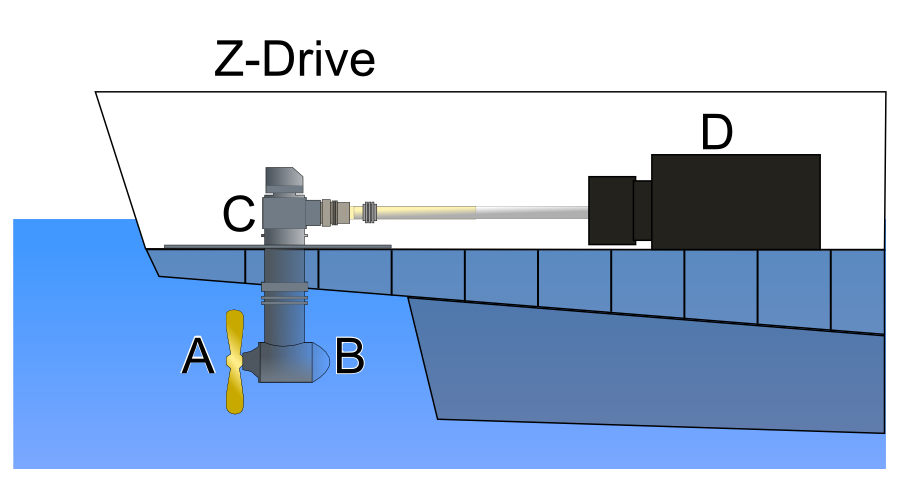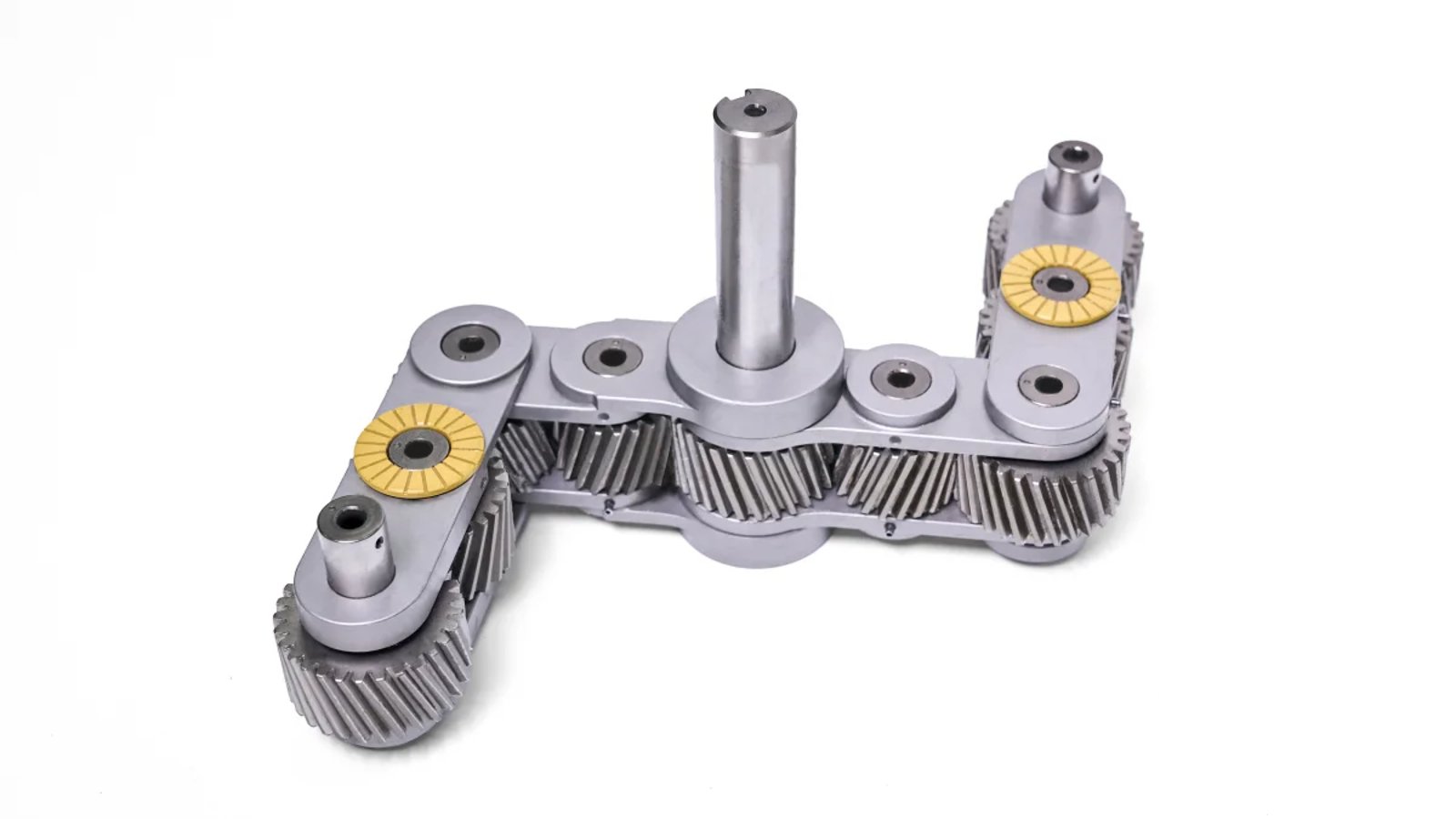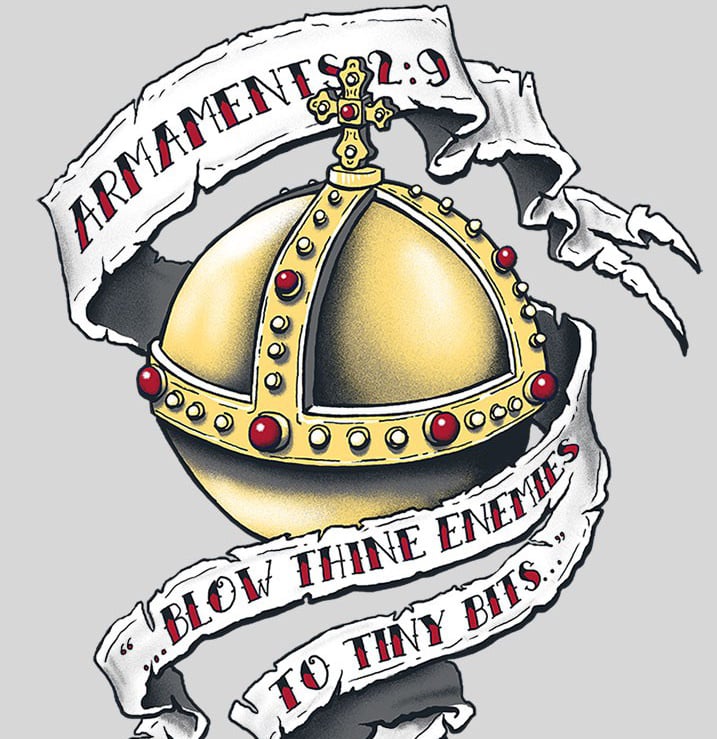Can we have more mechanical posts like this?
No, you need 555 posts about the shit that a billionaire said about stuff he knows nothing about
On Monday I’m going to tell my boss to fuck off. He isn’t going to blackmail me into doing high quality work with money. Honestly, fuck off.
Be the change you want to see!!
There’s 2 significant inaccuracies in the article and 1 large oversight in the official video.
- Differentials are not one wheel drive. They can seem to drive only one wheel when spinning the wheels as one let’s loose and the other stays still, but it’s not driving one wheel. It’s still driving both. The problem is the free wheel is spinning at twice the speed indicated on the speedometer and the other is at 0. The driveshaft puts in a certain number of turns, the wheels, together, must add up to an equal output (multiplied by the gear ratio). If the car is going straight with full traction, then they turn the same. If you floor it in snow, one is probably spinning 40% over it’s share and the other 40% under. This is not unique to rwd either as fwd cars still very much have a functioning differential. To throw some numbers at it to help clarify the function, let’s say the engine is asking the wheels to spin at 30rpm each in a straight line. In a left turn, the right wheel travels further and needs to spin at 35rpm while the inner spins at 25rpm. It still adds up to 60rpm, same as a straight line. Mash it in the snow and it might be 60rpm in the left and 0nin the right or 0 in the left and 60 in the left. It could be 5/55, 40/20, or any other combo as long as it totals 60.
PS: differentials are irrelevant when the wheels aren’t connected to each other. Individual-motor wheels, as shown in the video, don’t need a diff. The non-drive wheels in a 2-wheel drive vehicle do not have a differential on the non-drive axle.
-
Cv joints are not specific to fwd as nearly all modern rwd cars with independent rear suspensions have CV joints. I don’t know of any trucks still using U-joints either since big trucks are solid axle. Cv joints function the same as U joints. The difference is C.V. joints output constant velocity whereas U-joints (what you’ll see often under trucks on the driveshaft, two square C shaft ends with an X link between) have lopey output that gets worse with greater deflection angle. If you own a u-joint bit for your socket wrench, I invite you to play with it. Instead of a solid pinned X between the U ends, CVs have free-rolling balls that can roll inboard and outboard to maintain the link between the shaft’s cup and the wheel’s cone.
-
The article is inaccurate but the video ignores this part, so I don’t fault The writer. The CV joints are said to be a poor design, yet, it ignores the part where the video reinstalls them at 4:20 and 5:10 for the front wheels. This mechanism does not allow angular deflection between the motor and hub, as it’s shown, without a CV joint. Lateral displacement, yes, but not angular - as in it can’t steer. This may be an overall improvement by reducing how often it needs to bend (only when steering), but it doesn’t eliminate it. And even then, the rear suspension is still designed to change camber as it changes ride height. Camber is the angle of the wheel as measured top to bottom, as in what you see from looking at the wheels from the front of the car. It keeps the wheels flat on the ground as you lean the car in a corner. You may see an overloaded car’s rear wheels look like /—\ as viewed from the rear or -–/ when hanging free on a lift.
Look, I’m not an engineer at Hyundai (or even a competitor) but this doesn’t quite pass the sniff test. Cool idea for sure, but it smells a little like marketing is clamoring for something edgy to display. Even as displayed, the motors and original reduces were already very compact and in close proximity to the wheels compared to a normal engine. The slightly reduced footprint of this uni wheel and slightly increased friction of a bunch of additional gears makes me think this is a fractional improvement in practice rather than a revolutionary improvement.
I’d be concerned with the amount of unsprung weight this adds, too. You’re basically taking the transmission and adding that mass to the hub. Seems like it would be pretty crashy on rough surfaces.
I considered that but couldn’t make any conclusions. The driveshaft and sun gear are not added to the unsprung. I’d guess only half the weight of planets and carriers is added. It definitely adds the weight of the ring gear to the unsprung mass.
I’m also curious how this affects rotational mass. So while every component spinning with the wheel from tire to motor shaft has rotational inertia, small-diameter components such as drive shafts have relatively little rotational inertia. Wheels and even brake discs have a lot more. I don’t have numbers obviously but I’m curious if the rotational mass of the ring gear ends up being detrimental compared to a heavier-weight lower-inertia cv setup.
Yep.
Trucks used these as far back as pre-WWII. It a great solution for off road vehicles to gain clearance. At low speeds, even universal joints work fine for this setup, because the shaft rotates at 1/3 wheel speed, like a drives haft does going into a differential.
This puts a diff at each wheel.
Edit: These are called Portal Gears
I noticed they conveniently didn’t talk a lot about steering…
The claim of “one wheel drive” I think is meant to highlight what happens if traction is lost. It sounds like something I have heard on 4wd off-road forums. I agree the phrase “one wheel drive” is perhaps not a great way to explain the disadvantages of differentials vs limited slip differentials vs locking differentials vs individually driven wheels.
The idea of “one wheel drive” as I have seen it used, is that in a vehicle with one powered axle assembly (what we normally call 2wd-- either front or rear wheel drive) is that if you lose traction with either drive wheel, the vehicle no longer moves because all power is diverted to the slipping wheel.
If you have a limited slip differential, there is a limit to how much power is diverted to the slipping wheel. With a locking differential, you only stop moving if you lose traction to both drive wheels.
Anyway…
The design is really interesting.
You also bring up a good point about how camber changes with suspension position. Also the effective track width changes, such as with my 4Runner which has upper and lower control arms, a Double wishbone suspension. If the motor remains in a fixed position, the wheel will move onboard and outboard relative to the motor depending on suspension location.
I don’t quite get how these two effects are addressed with this new design. Or are the suggesting a different suspension technology that they didn’t discuss?
As for steering, I wonder if the design rotates the motor along with the wheel. In that case no CV is needed but I would guess there are some downsides to such a design.
I agree the video seems kind of… premature. The mechanism is cool but I don’t get the sense that its applications haven’t exactly been nailed down yet.
Individual motors on each wheel will still slip, just with half the power. So sure, it’s an improvement by an unrelated mechanism, but not having the wheels connected with a limited slip means it’ll still need a traction control system. And even still, the “half” power is a relative term because every car has a different output. That goes for not connecting left to right as much as it goes for front to back. So, not different than a traditional open diff or 2wd. There have been advances in brake-based traction control so they don’t just cut power and apply single brakes like the 00s, they can properly modulate pressure to get equal propulsion.
That’s a good point you’ve mentioned as well - the wheel will change distance to the motor as it goes through it’s motions. The only way to avoid that is to place the motor at the effective pivot point of the suspension which is, in a properly design suspension, inside the other wheel to mimic the level dynamics of a solid axle. That of course defeats the short halfshaft design direction. So something has to allow variation in distance. In the non-steer wheels, maybe this could be as simple as a telescoping spline drive. However, the video shows a small black joint at the same time stamps above on the rear and still has those normal-looking cv boots on the fronts.
Or maybe they’re ditching good handling and going with perfectly vertical suspension travel. Give it hard eco tires and it’ll slide before the suspension shows it’s flaws.
This mechanism does not allow angular deflection between the motor and hub, as it’s shown, without a CV joint. Lateral displacement, yes, but not angular - as in it can’t steer.
The axis of the motor doesn’t need to be parallel to the axis of the wheel.
If the axis of the motor is vertical, you could use a ring and pinion gear to transfer the torque to the driveshaft running out to the wheel, and have the steering wheels pivot around the axis of the motor.
The steering wheels’ hubs rotate in two directions. The steering action rotates through a vertical axis while the typical suspension rotates in a front-to-back axis pinned approximately through the other side of the car. So unless they abandoned common suspension design to let tires lean in turns more than a reasonable amount, there needs to be an allowance for angular deflection. A pinion gear arrangement sounds like it would take up a lot of the space they’re trying to save but still not solve the multi-axis problem found at all 4 wheels. I’m trying to not take their video so literally but it’s not like it’s a dealership rep spouting incomplete info here
But you need a CV or Universal on that drive shaft to accommodate suspension travel (or steering if needed on that wheel).
What for? The axis of the driveshaft would always be parallel to the axis of the wheel and perpendicular to the axis of the motor.
Look at this hand drill:

The hand crank is the electric motor. If you rotate the drill about the hand crank axis, you don’t change any angles between the drivetrain components and don’t need CV or universal joints
deleted by creator
- You are sort of correct about this, but it’s irrelevant since everyone moved onto limited slips decades ago.
As to the rest- you’re wrong. Sorry.
But the real reason this tech won’t be very important is because it’s a lot more complicated and expensive than a cheap ass cv joint and is minimally more efficient. I can buy both sides of my vehicle for like $80 and don’t have to worry about em again for ages. I think this new hyundai stuff could be reliable, but it’s going to be a lot more expensive.
Also, they look like they’d be noisy.
you’re wrong. Sorry.
No u. Bam, same level argument right there. Are you going to explain why or just throw out contrarian comments?
Cost will not be a limiting factor. Just about every feature on a 2023 car already costs more than a 1993 car’s version. Did adding a wheelspeed sensor, electronic 4-channel hydraulic brake actuator, and dedicated ecm programming cost too much to implement ABS? Did the complication of 40 sensors (100+ now) and a voodoo box of electronics cost too much to go efi instead of carbs? Did the price of disc brakes stop most cars from ditching rear drums? Did the cost of engineering and testing prevent manufacturers from implementing the following nearly-negligible aero improvements to eek out another 0.1% of fuel efficiency;
-
aero strakes into mirror shells (prius, escape)
-
relaminating roof spoilers into every hatchback/suv and even into every pickup bed
-
Vortex generators on the top surface of tail lights (sonata, chr)
-
Active grille shutters (fusion)
-
Full underbody trays
-
Chin spoilers (splitters) on just about every car to keep air out from underneath
-
Hood beak splitters to keep grille air off the canopy (Volvo, accord)
-
Short antennas/glass-embedded antennas to reduce antenna drag
-
Front fender outlet vents to create laminar flow over the wheels (f150 2015+)
No, it didn’t.
And I’d be interested to hear why you think helical-cut gears will be “noisy”. I’m guessing you don’t know why reverse whines in certain cars but not the forward gears
Edit: also, seriously, go do some shopping. LSDs are on the decline. On top of never being common in the first place, manufacturers at removing to brake-based simulated LSD rather than discrete components. There are incredibly few Fwd cars that ever had LSDs and fwd obviously makes up the majority of North American sales. Even Miatas and Mustangs only get LSD with optional packages.
-
Irrelevant since everyone moved onto limited slips decades ago.
Lol, what?
My RSX was made two decades ago in '03, so the newest that would be multiple decades old. It’s also a Type-S, the sporty model. It’s got an open diff.
My '93 Subaru Loyale, which is 3 decades old, has two open diffs, with a locking center diff. No limited slip.
My '04 (almost decades old) Crown Vic PI doesn’t have an limited slip. It was an option on Interceptor that the city didn’t opt for.
My '07 (not decades old) Volvo XC70 has no limited slip diffs. It uses the traction control to try to imitate them, but no actual limited slip differentials.
My partner’s '07 (still not decades old) Kia Spectra5 has an open diff.
The only car in my fleet that has a limited slip is my '02 Subaru Legacy Outback, and it was an option that the person who bought it new opted for, and it’s just the rear that’s limited slip, the front is still an open diff. Apparently the limited slip isn’t even that good either, you can still get stuck with two wheels spinning. I haven’t tested that yet, I just got the car.
If you go out and buy most cars today they’ll come with open differentials. The traction control system will likely try to compensate for this, but they do not have limited slip differentials.
Just how many cars do you have, exactly??
- It’s a hobby. I justify it because they’re worth under 15k combined. Many folk have two cars worth double of all 6 of mine combined (licensing/insurance included)
The RSX is on the chopping block. I want to get a more dedicated sports car, since I’m privelaged enough to own multiple vehicles.
The Outback and Volvo are salvage title purchases from copart that I’ll get salvage titles for, then enjoy for a bit before selling to break even, or even for a possible profit.
The crown vic is my beater. I drift it. I take it on logging roads. I take it on the Gambler 500. It’s fucking awesome. I’ll always have one, probably.
The Loyale is something I’ve wanted since highschool. I love the push button 4WD. I love how comically slow it is. I love the interior. I get quite a few compliments on it. It needs some work, but that’s part of the fun. I dunno if I’ll own it forever, but I really like the thing.
I, as of recently, own my grandpa’s 1984 Oldsmobile Delta 88 Royale. I’ve gotten similar compliments to the Loyale on it. My grandpa is about two weeks away from dying of cancer. I’ll own that car forever.
My partner owned a Spectra5 when I met her. It’s our economy car, which every household needs. I’d like to upgrade it to a Volt at some point.
I definitely own too many vehicles, but I love the variety and unique characteristics of each of them.
Sort of related, but I’m not one of those dickish gearheads, I use and support public transport, and think that the world as a whole would be better off with fewer cars. If one doesn’t want to drive, then they shouldn’t fucking have to.
Hey don’t let me take your fun away from you. I just think it’s an unusual amount of cars, but if you enjoy it then that’s great! Sounds pretty cool tbh
Yea, companies love to tout their “electronic differential” that’s nothing more than an open diff and traction control via the brakes (Toyota Tundra comes to mind, as recent as 2017).
Now thar Hyundai has patented it, it will never become popular enough to impact the market and be standardized in more vehicles or change anything, similar to the Wankel engine.
But capitalism creates innovation!!!
Some people argue that intellectual property law is not free market capitalism, and is instead a regulation that benefits big business. I’m one of those people
While I’d agree in essence, in practice I don’t. They’re an offshoot of capitalism. The goal of capitalism is profit, and if you can create barriers to competition, that protects your profit. IP law is something created out of capitalism as a barrier. If it isn’t the government doing it, it’d be goons hired by those in power. They exist because of capitalism, not from something external to it. If the system were focused on doing good or creating utility, IP law wouldn’t be required.
And regulations restrict both.
similar to the Wankel engine
Was the Wankel engine really a step forward though? I’m a gearhead who does all his own car maintenance, up to and including engine swaps in the past and retro-modding bigger turbos and aftermarket fuel injection systems into my cars (Datsuns in the latter case). That being said, I only know the very basics about rotary engines. I’ve always admired the Mazda RX’s from afar.
Mazda, who by no means makes a bad gasoline engine, could never get a rotary motor to last well or to have anywhere near decent fuel economy. Also, the rotary design was tried for a while in at least refrigeration compressor applications, where it blew up there a lot more than the other types of compressors as well.
Yea. They have worse efficiency. To get better efficiency from them you would need to run them hotter (afaik), and if you do that they would last even shorter.
It’s great if you want a smaller but still strong engine, but it’s not efficient and those seals are a big problem.
The argument is, though I’m not qualified to assess it, that Wankel engines are simpler, smaller, more power dense and, if allowed time to develop, would be an improvement on the traditional ICE. It’s very difficult to assess where we would have ended up and a little by the by, given we need to move away from burning fossil fuel.
That said, do check out LiquidPiston’s evolution of the Wankel engine. It does sort of look like they’ve solved a number of issues a traditional Wankel engine has.
“Probably failed cuz they called it the wanker engine lmao. Now set aside another few milli for the copyright lawyers”
What a badly written article, wrongly explaining both the diff and the CV joint. That’s not what they do or how they work.
Yeah, skimmed and saw one of his other articles praising the cybertruck and realized this likely wasn’t a source worth absorbing.
The explaination of how differentials work was painfully wrong. An I lost confidence in this author’s ability to explain the topic.
Ok. Care to elaborate, please?
Apparently I can watch that video every couple months and still be equally amazed by it.
Please remind me to watch this again in a few months, it’s super cool.Right?
I’m continually blown away at what 19th-century engineers understood and could do.
Perfect
Here is an alternative Piped link(s):
https://piped.video/yYAw79386WI
Piped is a privacy-respecting open-source alternative frontend to YouTube.
I’m open-source; check me out at GitHub.
Perfecter
That was awesome and perfectly explanatory. I learned something new today
There’s a bunch of old training vids like that on YouTube. Lots of people could learn how to present from them - they’re so much better than most stuff on YouTube.
https://upload.wikimedia.org/wikipedia/commons/3/3e/Around_the_Corner_(1937)_24fps_selection.webm
Wiki to the rescue!
It’s a great video from 1937.How the automobile differential allows a vehicle to turn a corner while keeping the wheels from skidding. Reverse telecine & introduction edited out.
And the article has info as well https://en.m.wikipedia.org/wiki/Differential_(mechanical_device)
Modern cars have “traction control”, which detects when a wheel turns more than the other wheel. If it turns too much more, it will engage a “diff lock” and lock the differential which makes each wheel turn with the same power/speed/energy as if the differential was just a solid axle.
The long & the short of it is that a differential is only “1 wheel drive” when the differential “thinks” (it’s not smart) it should put all the power into 1 wheel - which is when the cars computer locks the differential.
That’s only some cars.
Many today still use open diffs. Some use open diffs and braking to produce a result that looks like traction control or a torque biasing diff.
Some cars use electronically-controlled diffs that can vary pressure on clutches using simple electric servos to bias torque - Bendix is a big supplier of such things to companies like Honda.
Others use hydraulics, similar to torque converters, to bias torque (e.g. Audi’s original Quattro system).
And others use gearing to bias torque, such as Quaife differentials.
Factory systems (with rare exceptions) don’t use locking diffs (GM has one as an option, others may).
Please forgive my laziness - https://chat.openai.com/share/45e326f5-1653-4c51-b057-b36326963559
Came here to say this.
It was sooooo wrong.
The one thing they don’t really talk about is how it turns. The animations show vertical movement almost exclusively. At one point in the video there is a far shot showing a car turning and it looks like they actually swivel the entire motor to keep it perpendicular to the wheel which if true is going to pretty heavily limit it’s turning angle and radius.
The front wheels show CV-looking boots at 4:20 and 5:10. Even the rear wheels will likely need cv joints. Independent suspensions change camber with that coroner’s ride height to improve traction. That’s why when a car is overloaded, the wheels look like /—\ and when it’s on a lift, the wheels go -–/ (to varying degrees).
While there is some kind of boot shown the entire selling point of this thing was that it’s supposed to eliminate the need for CV joints. At that same 5:10 mark or there about you can also see the shot that appears to show the motors being pivoted to turn the wheel. I suspect these are not CV joints although they are joints most likely for camber adjustment as you point out, probably something like a universal joint.
Not a problem in RWD applications.
The whole pitch was based on replacing CV joints on front wheel drive vehicles.
From the presentation it looks limiting and to be honest it looks a bit overly complicated and likely to have some massive early growing pains. CV joints are comparatively simple and this is supposed to be more reliable? That’s not how it works.
Even if it was only useful at the rear, it would allow the battery to be moved further back and produce a better weight distribution. Most cars are front-heavy.
My guess is they will only put this on rear-wheel-drive cars. The system doesn’t look like it can rotate at all on that horizontal plane and moving the entire motor (that is sticking out of the back of the wheel) is basically a non-starter.
Edit, it may be possible to add another gear-set to enable rotation on the horizontal plane. But at that point I’m starting to wonder if the entire system is getting too complicated.
Like a CV joint? They kinda made a point in how great it was to get rid of the CV joint only to need to put it back in to get steering.
The axis of the motor doesn’t need to be parallel to the axis of the wheel.
If the axis of the motor is vertical, you could use a ring and pinion gear to transfer the torque to the driveshaft running out to the wheel, and have the steering wheels pivot around the axis of the motor.
Ok but then torque changes when you turn the wheel. Hopefully the effects are too slight to matter
For the lazy people out there: https://www.youtube.com/watch?v=Nd6C0y8xc20
Here is an alternative Piped link(s):
https://www.piped.video/watch?v=Nd6C0y8xc20
Piped is a privacy-respecting open-source alternative frontend to YouTube.
I’m open-source; check me out at GitHub.
Air conditioning and touchscreens didn’t alter how cars drove but did revolutionize the driving experience.
Can we please make touchscreens for neccessary functionality illegal, like using phones while driving?
Yeah, buttons can be found without looking.
They also provide tactile feedback allowing you to be sure they have been pressed without even looking.
Not a new idea, military trucks used reduction gear drives in the wheels before WWII. Edit: Portal Gears.
One downside to doing this is adding unsprung weight, which is not a good idea.
And it will still need a CV at the wheel to accommodate suspension travel.
You’re right on unsprung weight, this is going to add quite a bit, especially if you fill the thing with oil.
Not sure how you still need a CV though, as this performs that function. Watch the video, there’s a good animation. Basically this is a reduction gear and CV joint in one unit.
Camber. It allows the wheels to tilt allowing them to keep their entire tread on the ground when only one side of the vehicles suspension is compressed, like during a turn.
Also need them to steer the car
Article made it sound like only front wheel drive exists now and that only front wheel drive cars use CV joints lol.
This is pretty cool!
But, in the video there is a quick flash of text that went away after 1s, 120km/h max speed?
so the pretty much only upside compared to hub motors is less weight in the wheels, and comared to conventional drivetrain layouts there’s added complexity and slight extra interior space? i mean innovation is key, but i don’t quite see the upsides as much as the hyundai engineers.
Probably useful in other applications. A universal joint is used in so many places other than cars
I think weight in the wheels is a huge downside of hub motors though? So this kinda takes a middle ground… Unsprung weight is still increased but not nearly as much.
If you’re gonna go through all this trouble, why not put motors directly into the wheels? Then you can bypass the drivetrain all together and directly power the wheels.
If you put the motor in the wheel you increase the unsuspended mass. Bad for handling and ride quality
4 motors is more expensive than 1 motor and a bunch of gears
Do really need need 4?
If you cant get by on 2, you might have less power, but you can get better efficiency. With better efficiency you can have a smaller battery for the same range and reduce some of your increased cost that way.
And also, if one of the wheel motors breaks down will the inevitably obtuse software of the car allow me to drive on three wheels, or will it sit idle until a certified technician arrives and inputs a service code?
Setting aside all of the already observed questions in the comments already about mechanical viability, i.e. how this assemblage is supposed to steer. The elephant in the room is whether or not this is equivalently economical to produce compared to an axle with a CV joint in it, and/or if it will acceptably reliable for roadgoing vehicle use, what with having a shitload more moving parts in there.
The animation shows the geartrain assembly in an open faced housing, which if that’s how it’s ultimately designed is going to mean that there is now no way to keep the gears in a bath of oil or transmission fluid like is presently done in traditional transmissions and differentials. And yes, even in CV joints which are packed with grease inside their rubber sealing boots. I’ll let you in on a big automotive industry secret: There’s a reason current transmissions and other geartrain devices are kept suspended in oil all the time. A big one. One that has to do with your transmission not glowing red hot by the time you make it to your destination, or converting itself into glitter within the first mile.
Even setting aside lubrication concerns – Maybe the thing is chock-a-block full of sealed ballraces or something, for all I know – the big open slot they depict for the axle to move up and down in is just begging for a stone, a stick, a stray bolt, or any other show-stopping piece of debris from getting in there and causing you to have a very expensive day. Ditto with the gap around the edge of the sun gear, which is going to need a bitchin’ huge mechanical seal on it at the minimum. If the solution is perhaps to put some kind of rubber boot over the opening that moves with the axle, it’s going to have to be ridiculously flexible and remain so even throughout all kinds of temperatures and operating environments. Cars, you know, being devices quite infamous for being operated outdoors in the weather and all.
I mean, I can’t imagine Hyundai’s engineers haven’t thought of this. But I wonder if this is one of those works-in-the-lab-and-test-track things, and they’re expecting someone else to figure out the viability challenges.
deleted by creator
How can you steer?
This is a Z-drive:

You can rotate the propeller about the vertical axis of the driveshaft running from B to C.
Now, imagine the propeller is your wheel.


















